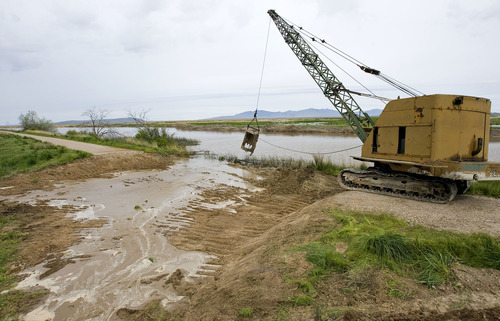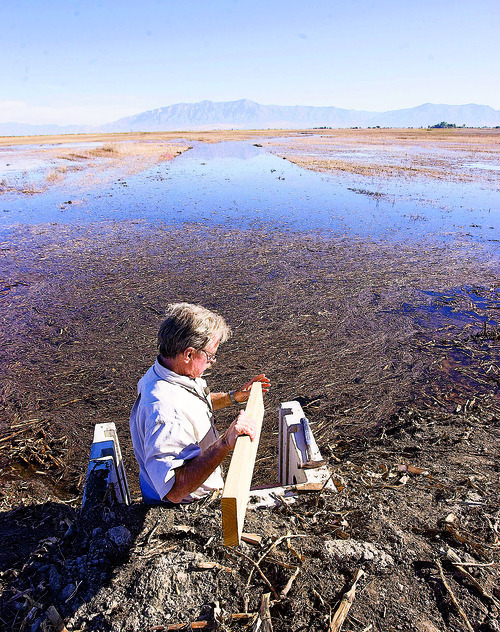This is an archived article that was published on sltrib.com in 2011, and information in the article may be outdated. It is provided only for personal research purposes and may not be reprinted.
The waters have yet to fully recede at some locations, but managers of wildlife management areas across Utah have begun working to repair damage caused by high runoff this past spring.
Major destruction happened on several waterfowl management areas in northern Utah, but the impact of record snowfall and the resulting runoff was felt across the state.
"There was damage in every region except the central region," said Mike Canning, chief of habitat for the Utah Division of Wildlife Resources (DWR). "For the most part it was fairly minor, but we did see some significant areas of damage in northern Utah."
And in most of those cases the significant damage was human-controlled breaching of dikes in waterfowl management areas. Ogden Bay Waterfowl Management Area was breached three times (one natural), and Farmington Bay Waterfowl Management Area and Harold S. Crane Waterfowl Management Area each had one.
All the breaches will be repaired — with some projects getting started as early as this week — and there should be no impact to waterfowl hunters when the season gets under way in October.
Rich Hansen, manager of Farmington Bay WMA, says it could have been much worse.
"We dodged a huge bullet. We had the potential for serious flooding on the east side of the area," he said. "The snow came off so much slower than we had expected, and we didn't have to do any other breaches."
A 30-foot breach on the South Crystal Dike on the southwest corner of the WMA was created in early June when the water level reached the top of the dike. Hansen expected the water to rise when officials let him know they were diverting water from the Jordan River down a series of canals.
"It started flowing over the dike, and to save the dike as a whole, we made a 30-foot break," Hansen said. "That prevents erosion off the top of the entire dike and the possibility of several natural breaches."
The hole in the South Crystal Dike will be plugged with water-control gates in preparation for future flooding events. Similar repairs will be completed on the dikes at Ogden Bay and Harold Crane WMAs.
The cost of all the repairs from the high water is about $250,000, but the price climbs to easily over $1 million if possible improvements to the damaged areas are done at the same time.
"In the case of Ogden Bay, we could do some dredging and install some additional floodgates on top of repairing the damage," Canning said. "But the dredging can be expensive."
Paying for the minor repairs will be done within annual maintenance budgets, and "other basic maintenance will be deferred," Canning said.
Avenues for paying for the Kingston Canyon damage will be pursued through habitat funds.
DWR officials are not sure where the money for the larger projects at Ogden Bay and Farmington Bay will come from, but the work will be done as they figure it out.
Canning said there are a couple of possibilities, including the Federal Emergency Management Agency and a state natural hazard mitigation program.
"If those funds don't come through we will look at other budgets to get the repairs done," he said.
Hansen said the high water did more than create issues with dikes in Waterfowl Management Areas.
"The majority of our local birds are still on nests. Seems like a lot of them just kept putting nesting off and those that tried may have been flooded out," he said. "It seems like we will have some great production, but there will be a lot of young birds in the fall."
Costly damage
Other required repairs across the state include:
Damage to a stream restoration project on the East Fork of the Sevier River in Kingston Canyon.
Road damage at Stewart Lake in Uintah County and on Willow Creek in the Book Cliffs.
An access road in the Henefer/Echo WMA.
Road repairs on the Kamas WMA
Breaches on two dikes at the Matheson Wetland Preserve in Moab. The DWR does not own the wetlands (The Nature Conservancy does), but water from the dikes impacts lands owned by the state.









